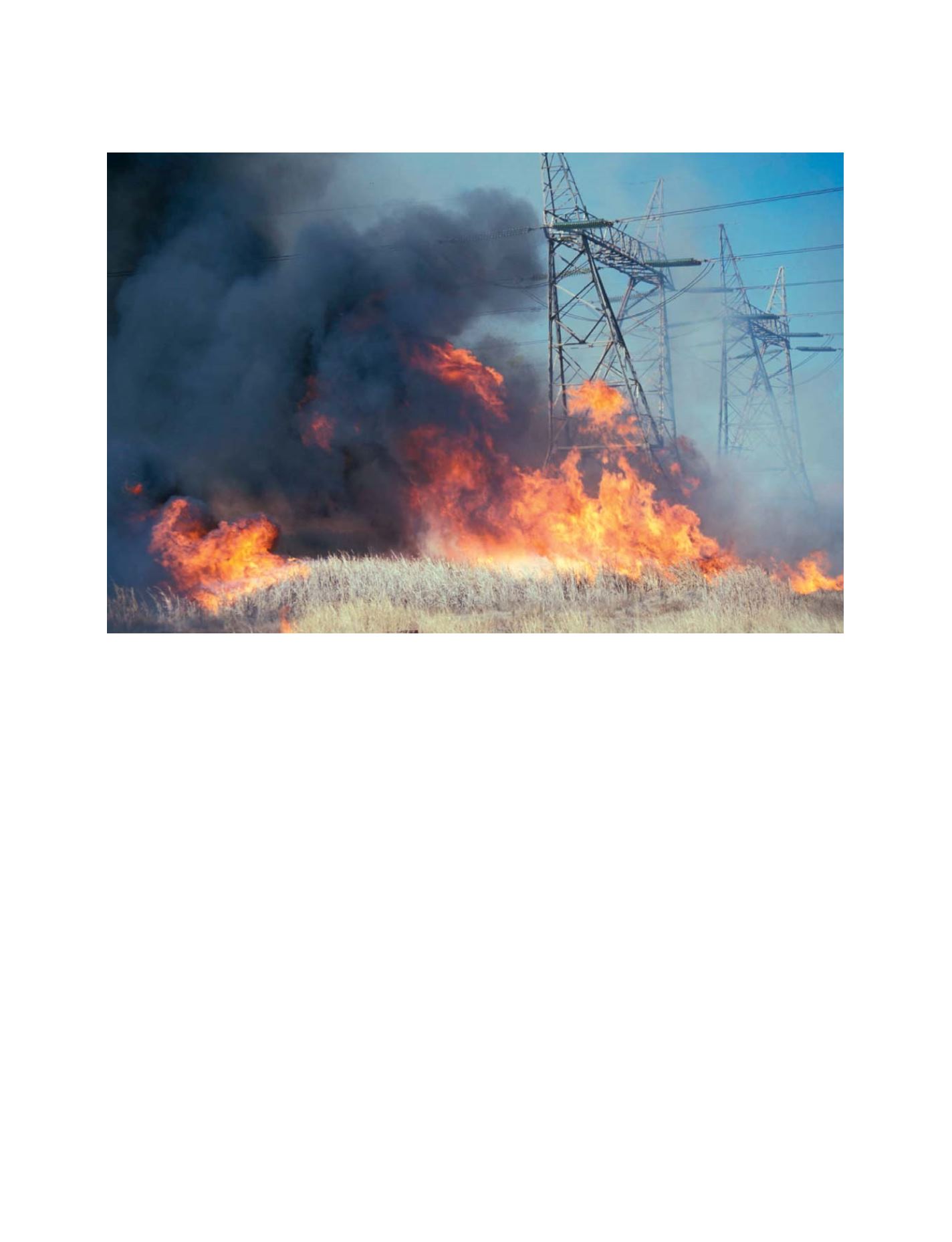

[
] 169
the diurnal cycle of the thermal and infrared bands, and
then to fit this model to the observed data of the last 24
hours. The model can then be used to generate accurate
estimates of the expected background temperatures. If
a statistically significant difference between the current
observed temperature and the predicted background
temperature is observed, then the pixel in question is
classified as a hotspot. The first implementation of this
algorithm relied on a Kalman filter to provide the esti-
mates of the background temperature. Initial results
indicate that this method is significantly more sensitive,
particularly in cases where the background temperature
is below 300K e.g. early morning.
Extending AFIS functionality
The intention is to shift the emphasis from simple fire
detection to more sophisticated fire risk management.
This requires a good understanding of what controls
wild fire behaviour. The Meraka Institute is currently
building domain ontology for wild fires. The ontology
will capture key concepts in the wild fire domain such
as combustion properties, fuel load, burning regime, fire
weather, fire suppression methods and topographical
controls. The aim is to use the Sensor Web to observe
specific fire-related phenomena described in the wild
fire ontology and employ machine reasoning to deter-
mine fire risk and issue more useful fire alerts.
of background pixels, the mean and standard deviation statistics are
calculated from the difference between the mid-infrared and thermal
band. The pixel under consideration is then classified as a hotspot
if its mid-infrared value exceeds the background mean by some
multiple of the standard deviation. A similar test is performed on
the mid-infrared and thermal band difference.
Hotspot detection success rate
The success of AFIS as a management tool within Eskom is measured
by its ability to detect fires close to transmission lines before
flashovers occur. MODIS was able to detect an average of 44 per cent
of all flashover fires during 2003-2005, while MSG detected 46 per
cent of all flashover fires during the same period. By combining the
detection accuracy of MODIS and MSG within one system (AFIS),
the detection rate rose to 60 per cent.
2
The statistics of the MODIS
and MSG detections clearly demonstrate the limitations of each of
these sensors as a detection tool on its own. The MODIS sensor was
able to detect many of the smaller fires, but due to its infrequent
revisit time, was unable to detect short-duration fires. The MSG
sensor struggled to detect smaller fires but picked them up when
they grew big enough to be seen by the current algorithm. The 2 per
cent higher detection accuracy calculated for MSG with its lower
resolution and less advanced detection algorithm shows the impor-
tance of frequent observations.
In order to further improve the detection rate a new, more sensi-
tive non-contextual hotspot algorithm is under development for the
SEVERI sensor. The basic approach is to build a general model of
A grass fire burning underneath an Eskom transmission line
S
OCIETAL
B
ENEFIT
A
REAS
– D
ISASTERS
















